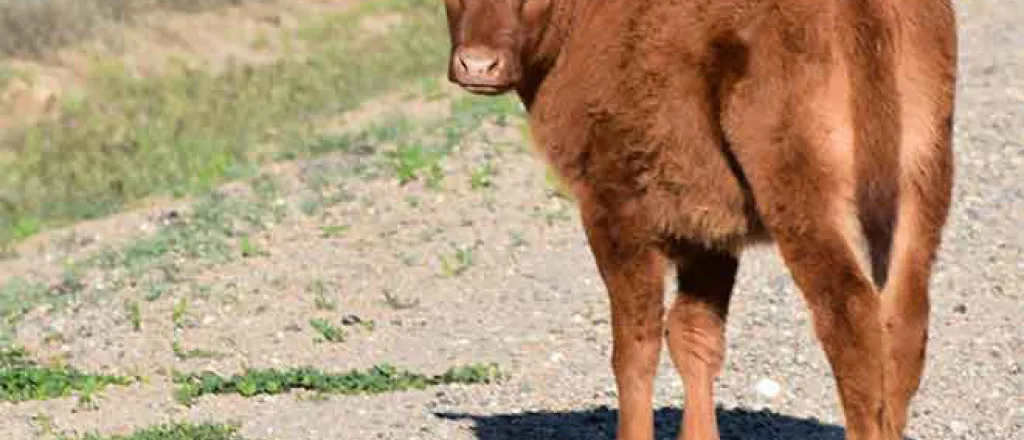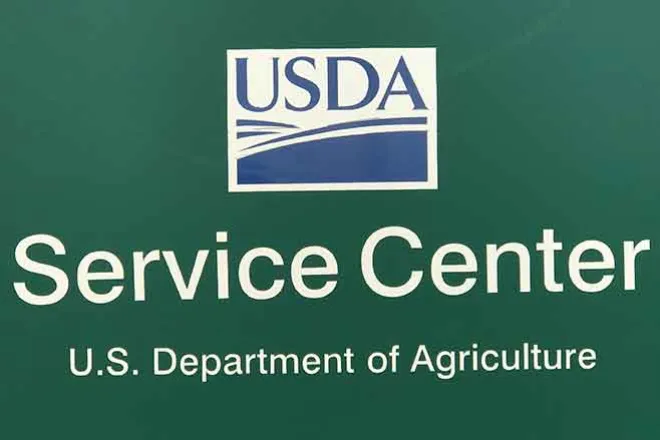
TRANSCRIPT:
[Music] Welcome to Pasture to Profit podcast.
I'm Scott Stennett, Colorado State University Extension Livestock Specialist along with Travis Taylor, another Extension Livestock Specialist here at Colorado State.
So Travis, calves are hitting the ground at a rapid pace in Colorado.
Today we're going to build off our episode 1 of Pasture to Profit podcast dealing with birth of calves and talking about calf management in the first few weeks postpartum.
Travis, I think first question we probably want to kind of hit on is what are the keys to maintaining that early calf health?
Well I think Scott, realistically when we talk about calf health it breaks into two areas.
We're trying to maximize our resistance to calves picking up something or being exposed to things and again that deals with minimizing exposure to all those different environmental effects and disease pressures that we may see in the cow-calf world.
So if we talk about maximizing resistance that all starts with a very good vaccination program from what we vaccinated those cows and vaccinating them in a timely manner so that we have a high titer in that cow so that she's producing the correct antibodies in herself that leads to getting that calf the antibodies it needs in that colostrum that that cow is producing.
And I think that's probably the second most important thing that we can do is once we get it live we get it up and we get it nursed and we give it a good dose of a high quality colostrum and if that calf's a little late nursing maybe that's a supplemental colostrum that we buy just to ensure that that calf has a little better health and that's a cheap way of getting these calves started right.
Some other things to think about would be maintaining a consistent schedule.
Getting up and making sure we feed those cows at the same time so they're not producing too much or too little milk that the calf's getting equal amounts of milk at the right times or consistent times throughout the day helps keep that calf in good health.
We also want to minimize exposure to disease pressure and in the environment.
That involves proper spacing, getting these calves spread out so we're not all crowded in the same facility.
Getting them quality protection from the weather whether that's simple wind breaks, whether we have some sheds that we have available to them.
I'm a big proponent of wind breaks because we still get some sun behind them to kill some of our bacterias that those calves may be shedding or their mothers for that fact.
Having good hygiene, clean ground, doing away with water holes so these calves aren't drinking muddy water after these eastern Colorado squalls that blow through and leave us some muddy places and keeping them in the sun and dry.
Sun kills a lot of the bacteria and viruses that we have and if we keep it dry ground and clean ground we don't get mud on those udders, we don't get those calves ingesting dirty water.
I think that goes a long way to making sure calves get started in the right direction.
So it reminds me when I was a kid you know the old scout master would say dry is warmer than wet and he was always encouraging you to change your socks and stuff and make sure you had on dry clothes to stay warm those winter campouts.
But when it comes to calves that may be showing some signs of illness what are we really looking for?
What are we observing for?
Well I think we want to get on that early and usually the earliest thing we see from those calves is depression.
Calf doesn't feel right, he's got his ears down, his head may be hung low, he's lethargic in his movement, maybe he was a big calf at birth and he didn't get up and get going right away.
I think those are some of the things that we're looking for in those depressed calves that are just falling behind or not acting normally.
Of course everybody's scared of the term scours, that watery discharge that we get.
Some of that's due to the calves changing GI tract, some of that's natural, but then too much of that where we get the real watery liquid scours to come out we want to be watching and careful of that.
We want to also when we're feeding drive along behind those cows make sure that we have cows that don't have overly full udders.
That might be a sign that you need to go look that one's calf up and see what's going on there.
That calf's not eating regularly or that cows producing milk and that calves not getting up to to clean her out.
And then when we're looking at calves just pay attention to calves that might have some respiratory things, heavy breathing, uneven breathing, coughing, those type of respiratory issues that we're having.
I think those are all signs that we see in those calves to show us the early onset that we may be having problems with something.
Okay and once we've identified we sure enough got a problem, we've got some sick calves, you've got your veterinarian that you've hopefully got your VCPR with, what can you do to help yourself and the veterinarian out when it comes time to call them in and say hey I've got a problem and I need some help here?
Well I think the biggest thing when you're dealing with your vet and when you're dealing with calves is let's get this started early.
All of us have found that occasional calf that we just lose or has expired.
Why?
Have we observed why that calf is expired?
Do we have a reason for it?
Just don't chalk it up because you know as Dr. Frank Gehry our extension beef veterinarian at CSU likes to say how many can you afford to lose?
If you come to me and I've lost eight calves in the last four days, if you'd come to me when you'd lost the first two, maybe I could have saved you the last four.
So start early.
Maybe you want to do a necropsy on that one to make sure it died from what you think it died from or maybe just open it up and make sure that everything inside seems to be functioning properly.
I think another important thing is to know your signs of dehydration.
Watch for those calves that are sunken in their side, sunken eyes, dry nose, pale gums, those calves where you tent the skin and it doesn't snap back because a dehydrated calf doesn't last very long because their main meal at this point in time is a liquid diet.
So they need to be able to hold that hydration.
I think you also important to be able to tell the age of these calves when they get sick.
If all your calves are getting sick between 8 and 14 days of age, it's probably a different disease that we're dealing with than if the calves are getting sick at 20 to 35 days of age.
So there's different organisms that attack at different times and we need to understand that and we need to understand what we're treating.
So if we really can break most of these disease barriers and young calves down into two, we have those that are localized in the GI tract, which is your rotavirus, your coronavirus, your cryptosporidium, and those are likely to respond very well to a fluid therapy treatment.
They get washed out of the gut, you keep those calves hydrated, you have a really good chance of getting those calves through whatever hit them and getting them back up, but those calves don't respond to antibiotics as well and actually antibiotics in those calves will hurt the recovery of those calves.
And then you have the other group, which is the inflammatory enteritis, such as salmonella, invasive E. coli, the clostridial problems that you have with enteritis, those are calves that will respond to antibiotics because those cross the blood barrier, are attacking different parts of the body, you can kind of see those calves because they may not be dehydrated, but they're also depressed.
They have maybe some extra abdominal fill, you see the bloodshot eyes in those calves.
Those diseases cause inflammation, so you'll see some swollen joints, they'll have more lung pressure and respiratory issues like pneumonia as those organisms attack their inner body systems.
That's when we really need the assistance of a vet and it's going to take that vet assistance to help us get through those problems.
And if you want to know more about these, you can check out our Golden Plains Extension website, go to the livestock section and hit the "Better with Beef" tab.
Dr. Frank Gehry put an hour-long video together for us that talks specifically on dealing with those calf, early calfhood diseases.
Well yeah, I think the big key thing there is observation.
The more you observe, the more information you have to share with your veterinarian, the better they're going to be able to help you out.
It may be something they can say, "Hey, over the phone, come by, swing by, pick this up, this is what you're going to need," or "Nope, I'm going to be there in a little bit because we need to really both look at this."
So observation, I think, is kind of your key here from what you're telling me.
Absolutely, Scott.
I think you hit the nail on the head right there.
If we're observant and we can record and know when these things are happening, we go a long ways to dealing with a positive recovery in these calves.
All right, well thanks, Travis.
I think we're going to wrap up this episode for the day.
If you have any questions on this topic or you've got another topic you'd like to suggest to us, please contact us here at the Pasture to Profit podcast.
You can call me at my extension office here in Kit Carson County at 719-346-5571.
And you can reach out to me at the Yuma County Extension Office at 970-332-4151.
And again, this has been Pasture to Profit.
We appreciate you listening and we'll see you next time on our next podcast. (upbeat music)








